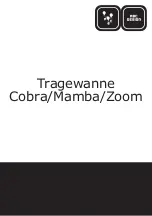
© National Instruments
|
5-17
From this, you can see that while the measurement time for one counter is shorter, the accuracy
is best in the sample clocked and two counter large range measurements. For another example,
Table 5-4 shows the results for 5 MHz.
Again the measurement time for the one counter measurement is lowest but the accuracy is
lower. Note that the accuracy and measurement time of the sample clocked and two counter large
range are almost the same. The advantage of the sample clocked method is that even when the
frequency to measure changes, the measurement time does not and error percentage varies little.
For example, if you configured a large range two counter measurement to use a divide down of
50 for a 50 k signal, then you would get the accuracy measurement time and accuracy listed in
Table 5-3. But if your signal ramped up to 5 M, then with a divide down of 50, your measurement
time is 0.01 ms, but your error is now 0.125%. The error with a sample clocked frequency
measurement is not as dependent on the measured frequency so at 50 k and 5 M with a
measurement time of 1 ms the error percentage is still close to 0.00125%. One of the
disadvantages of a sample clocked frequency measurement is that the frequency to be measured
Max. frequency
error (Hz)
.638
31.27
1,000
.625
Max. error %
.00128
.0625
2
.00125
Table 5-4.
5 MHz Frequency Measurement Methods
Variable
Sample
Clocked
One Counter
Two Counter
High
Frequency
Large Range
fx
5 M
5 M
5 M
5 M
fk
80 M
80 M
1,000
80 M
Measurement
time
(
mS
)
1
.0002
1
1
N
—
—
—
5,000
Max.
Frequency
error (Hz)
62.51
333 k
1,000
62.50
Max. Error %
.00125
6.67
.02
.00125
Table 5-3.
50 kHz Frequency Measurement Methods (Continued)
Variable
Sample
Clocked
One Counter
Two Counter
High
Frequency
Large Range
















































